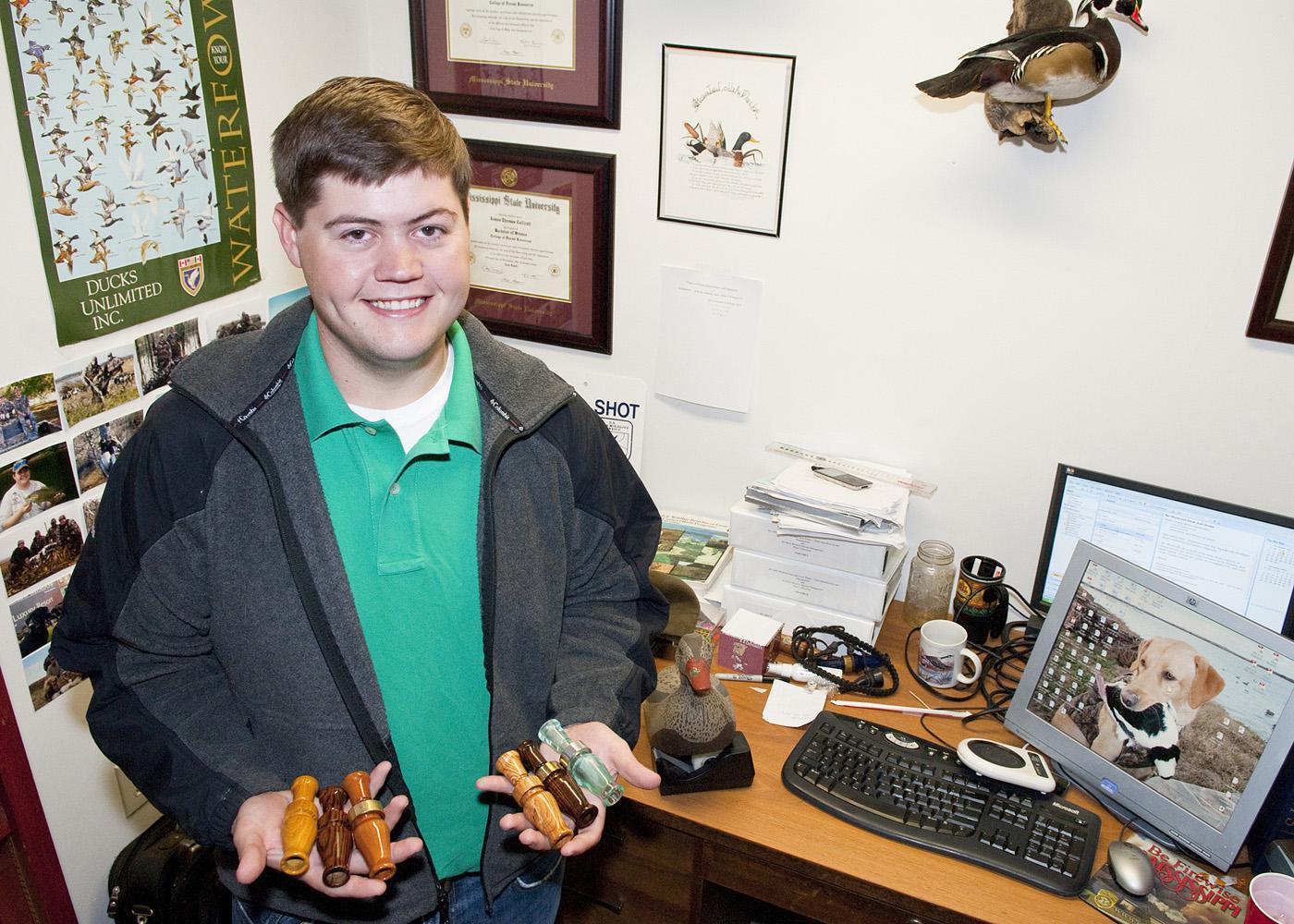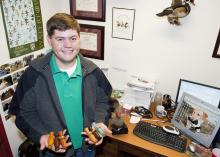Information Possibly Outdated
The information presented on this page was originally released on July 28, 2011. It may not be outdated, but please search our site for more current information. If you plan to quote or reference this information in a publication, please check with the Extension specialist or author before proceeding.
MSU study determines realistic duck call materials
MISSISSIPPI STATE - Most duck hunters look forward to the thrill of mimicking duck calls to attract members of the flock.
James Callicutt, a former Mississippi State University graduate student, has spent much of his life as a duck hunter and call maker. Most recently, he has studied the sounds of female mallard ducks and compared them to sounds from man-made duck calls constructed of different types of materials.
Although duck calls originated in the 1850s, Callicutt is the first to scientifically compare the acoustic features of wild female mallard calls to the acoustic features of humans using duck calls. As part of his graduate research in the MSU Department of Wildlife, Fisheries and Aquaculture, Callicutt found a way to measure the accuracy of man-made duck calls, which helps hunters create more realistic calls.
“Female mallards make numerous sounds. The most common is the decrescendo, or hail, call,” Callicutt said. “The decrescendo typically consists of five to six quacks, with the loudest in the first and second note.”
Decrescendos are the sounds most often imitated by duck callers. Callicutt recorded 620 decrescendos of wild female mallards during the winters of 2008 and 2009. He then constructed duck calls from acrylic and different types of hardwood.
“Calls were made of native woods, including osage orange, yellow poplar, black walnut, pecan and red oak,” Callicutt said. “We also used exotic bocote and cocobolo from South America and Central America because these are used in commercial production of wooden calls.”
Callicutt made 16 experimental combinations of calls. He fitted seven hardwood calls and one acrylic call with single or double plastic reeds, which create sound by vibrating when the calls are blown. The next step in his research was to assemble a group of experienced duck callers.
“We asked prospective callers if they considered themselves an average-to-good caller and accepted their participation in the experiment if they replied ‘yes,’” said Rick Kaminski, wildlife ecology and management professor and Calicutt’s major professor. “We assumed the 38 callers were a representative cross-section of duck hunters capable of calling ducks in the field.”
The duck callers listened to a recording of a randomly chosen female mallard and were asked to mimic the recording using each of the 16 duck calls. Researchers used specialized software to digitize and compare the calls of the mallards and callers. This comparison showed that duck calls equipped with double reeds created more accurate calls. In addition, the top 10 calls were made from denser materials.
“We found that cocobolo, bocote, pecan, osage orange and acrylic with double reeds most resembled the descrescendos of female mallards,” Kaminski said. “Besides these hardwoods, duck call manufacturers could use hardwoods with similar density and hardness, such as hickories and persimmon.”
The research provides valuable information to duck call manufacturers and hunters, and Callicutt’s work has landed the New Albany native with a start-up company specializing in duck calls. While his company, Hardwoods Waterfowl Calls LLC, may not replace his career as a waterfowl biologist, his blend of research, entrepreneurism and passion has created new opportunities for the university alumnus.
“This research allowed me to combine my hobby of making duck calls with my education and has now given me an opportunity for a business,” Callicutt said. “I have something unique to offer duck hunters: a scientifically evaluated duck call.”





